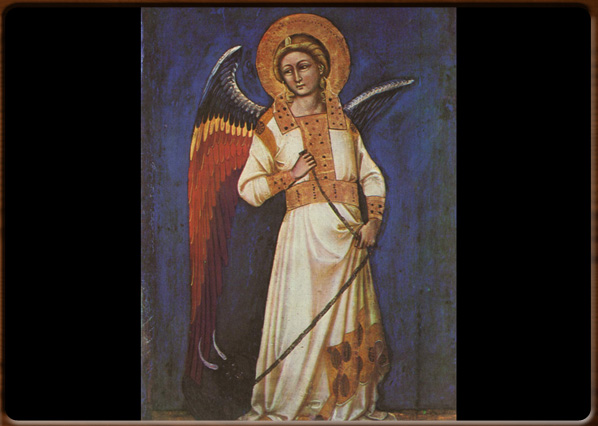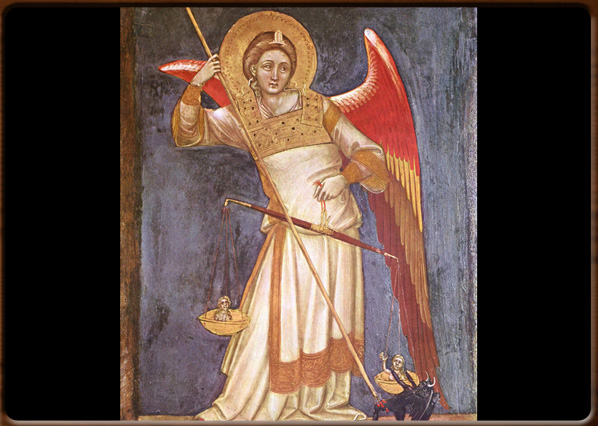
Series of the Angels, Guariento, 1350, Palazzo Carrara Padova.

From the Series of the Angels, Guariento, 1350, Palazzo Carrara Padova.


No video
Di Ridolfo Guariento, better known as “Guariento” or “Guariento di Arpo”, probably came from Piove di Sacco (Padua), though we only have definite information about him during the period 1338-1370.
Considered one of the greatest Venetian painters in the 14th Century, he was greatly influenced by the works of his compatriot, Giotto, as can be seen in the crucifixes attributed to Guariento now visible in Bassano del Grappa (Vicenza) and Cambridge (USA).
Records show that he lived in Padua, having painted the famous Angels cycle in roughly 1357: oil paintings on wooden panels (57x80cm.) portraying the hierarchy of angels. These wooden panels, now in the Civic Museum in Padua, were commissioned by the Carraresi, lords of Padua, for their private chapel and were painted in various styles: the way the robes of the sinuous long figures of the angels fall is typical of the Mediaeval and Gothic style, although obviously inspired by Giotto’s plastic style, while the empty gazing eyes are typical of the Byzantine school, still a strong influence on Venetian art.
Another major work attributed to Guariento is the monumental Paradise fresco inside the Doge’s Palace in Venice, ruined in the fire of 1574 (only a few smoke-damaged fragments now remain).
1300 - 1400 - - rev. 0.1.5